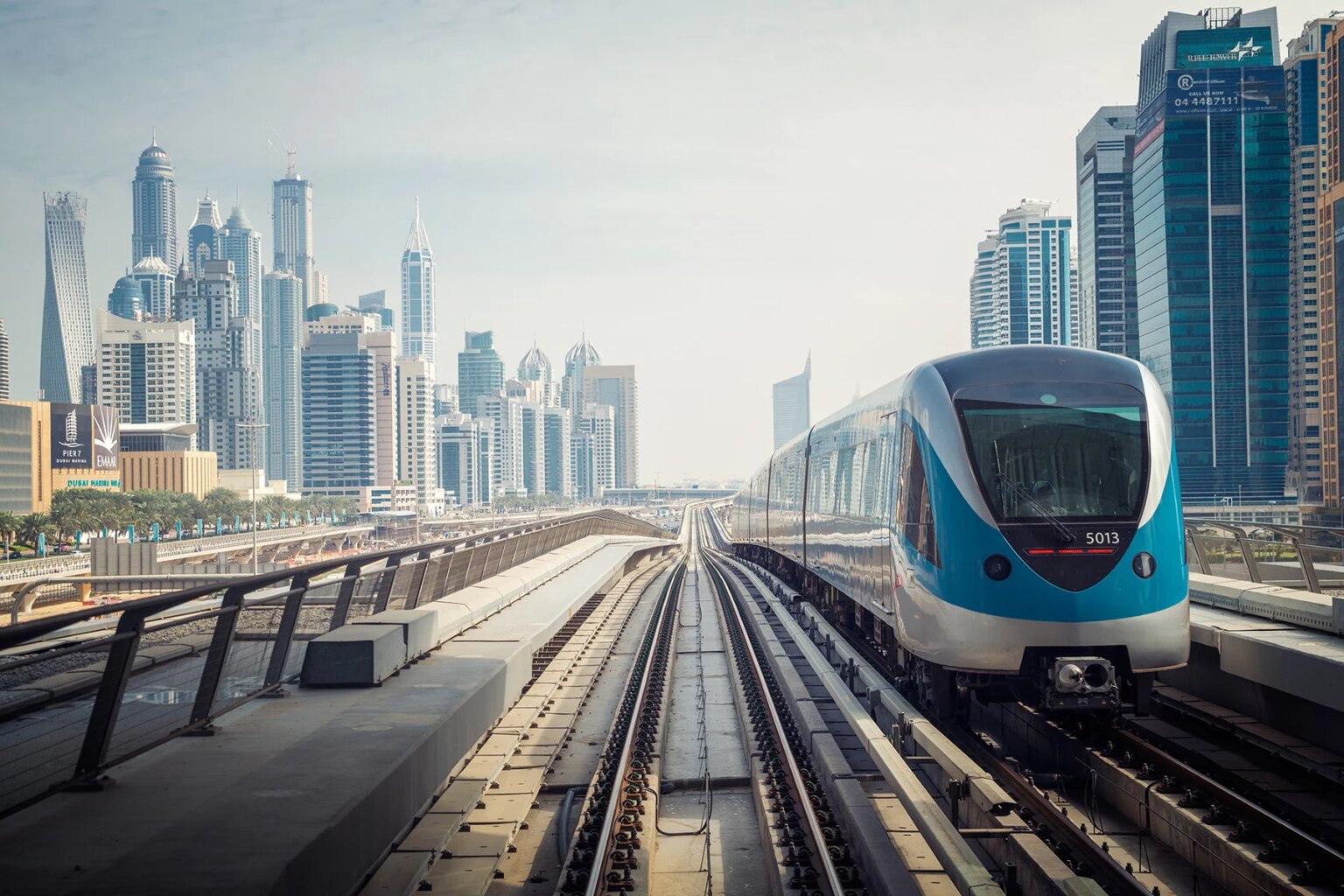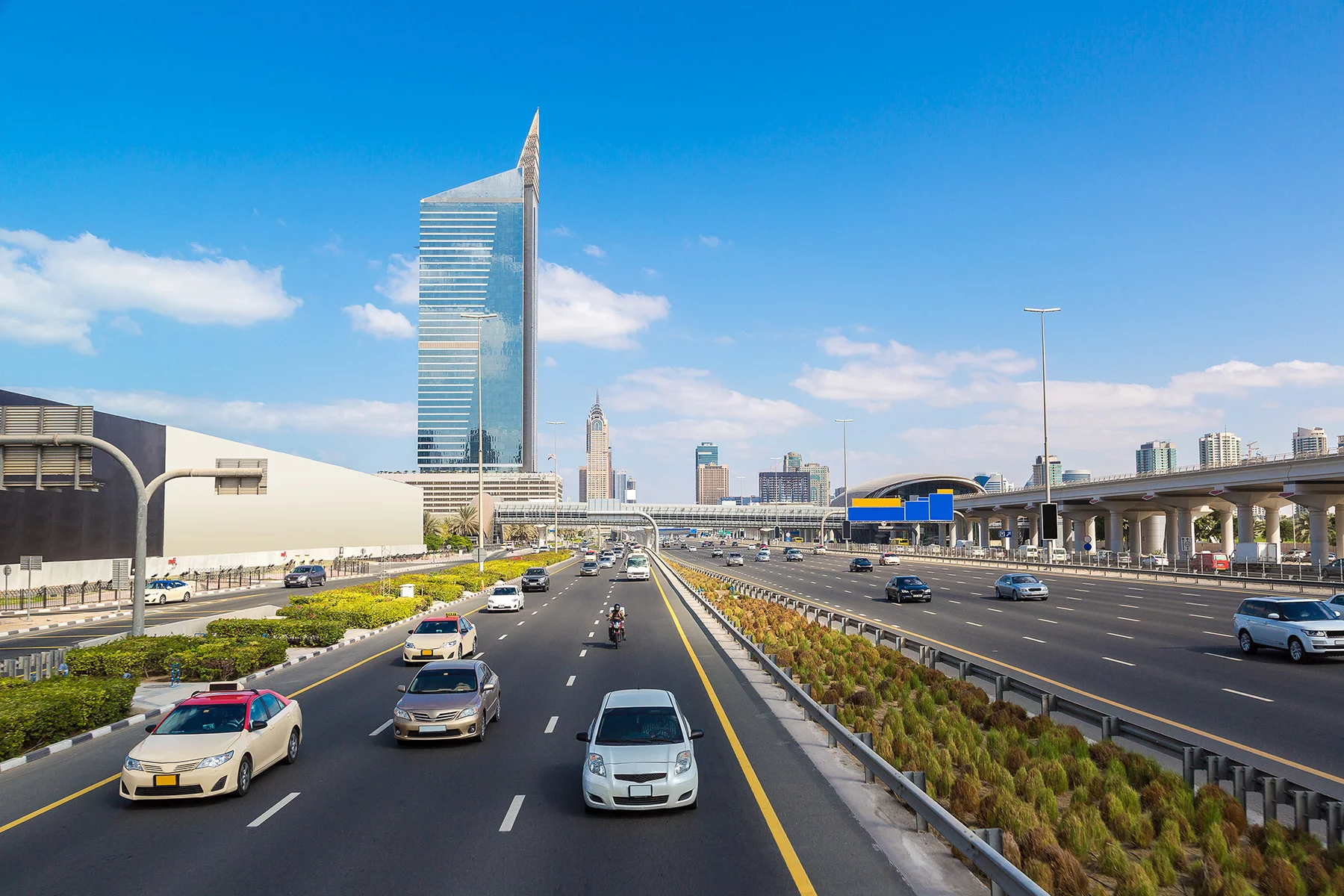Public transportation in the UAE – a country that was once the domain of private vehicles – has now emerged with some of the best-laid plans to suit all pockets and lifestyles. Indeed, the country’s roads, in all seven emirates, are a motorist’s paradise. Add to that the low cost of fuel and availability of top car brands at reasonable prices, and you have a compelling case to get behind the wheel.
However, if you want to avoid the hassle of maintaining a car, alongside attendant parking issues and paying (very) steep penalties for breaking rules, you can relax. The public transportation system in the UAE is world-class depending on where you live, and it’s getting even better by the day.
This article includes the following information:
- Public transportation in the UAE
- Public transportation apps and websites
- Trains in the United Arab Emirates
- Buses in the UAE
- Long-distance coaches in the UAE
- Taxis in the UAE
- Other methods of public transportation in the UAE
- Disability access for public transportation
- Safety tips for public transportation in the UAE
- Making a complaint about public transportation in the UAE
- Useful resources
Public transportation in the UAE
The public transportation system in the UAE – particularly the three hubs, Dubai, Abu Dhabi, and Sharjah – is state-of-the-art, efficient, and clean. Barring rare cases of traffic, the network runs like clockwork. It is comparable with, if not better than, the highest standards elsewhere in Asia and Europe.
Public transportation in Dubai
The government controls most public transportation in the UAE – the buses, taxis, water taxis, and the metro. In Dubai, the Roads and Transport Authority (RTA) has the operations of public taxis, the Dubai Metro, the water transport system, buses, and the Dubai Tram, under its purview.
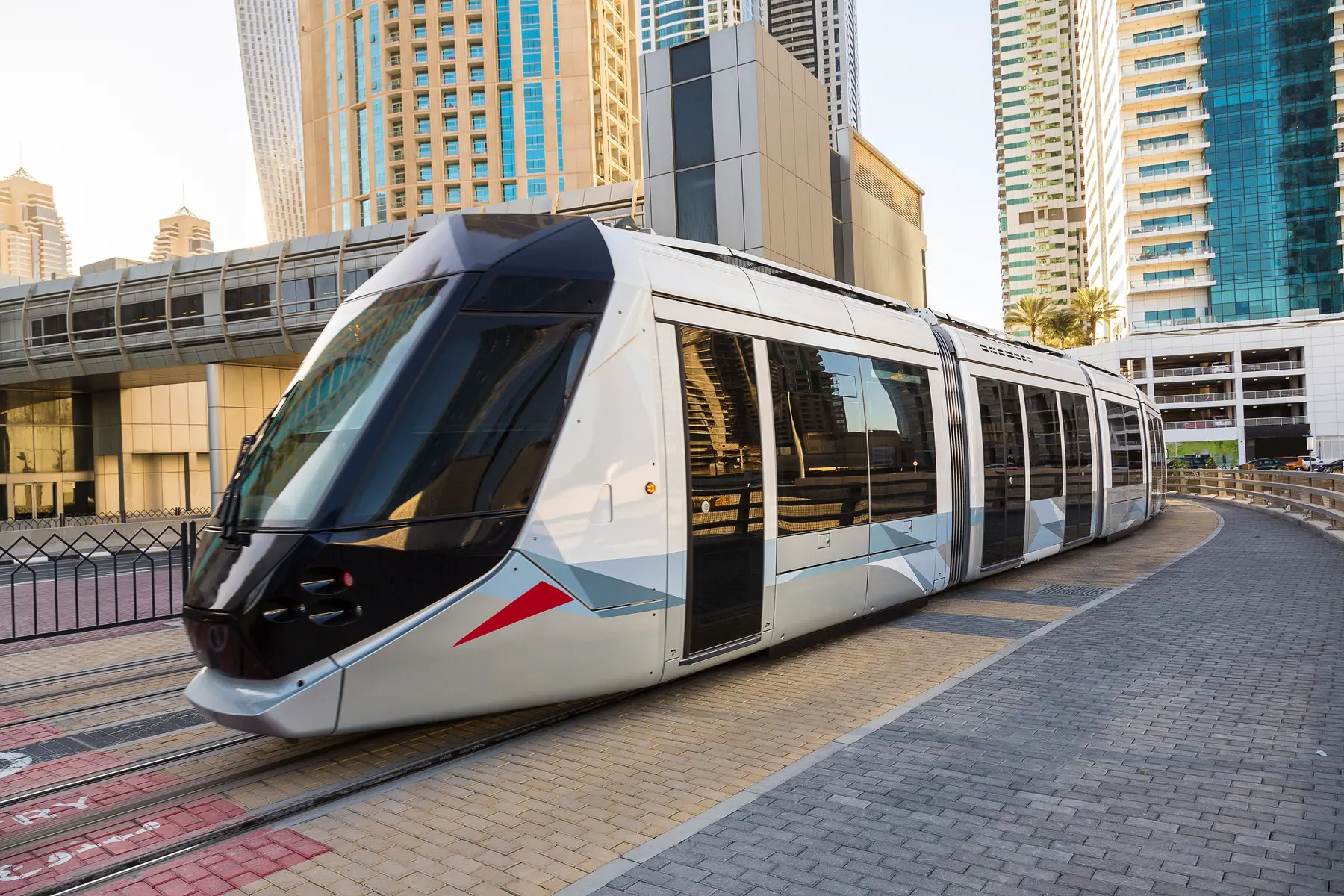
Dubai is the only emirate that has a transport card linking most forms of public transport payments, including the metro, tram, buses, and water buses. In order to avail of any of these services, you need to get yourself a Nol card (in Arabic, nol means fare). Pick it up from any metro station; the easiest and most efficient place to get it from.
While there are no consolidated figures for the UAE’s public transport usage in Dubai – the most populous emirate – there were around 461 million journeys in 2021 on public transport (in a city of 3.43 million).
Public transportation in the other emirates
The smaller emirates of Fujairah, Umm Al Quwain, and Ras Al Khaimah do not compare with the likes of Dubai, Abu Dhabi, and Sharjah when it comes to public transport. However, you can travel to the larger emirates through buses and taxis. They also have sufficient taxis – both public and private – that offer cheap mobility in these areas. Chances are you will not be living in these lesser-known emirates, but if that is the case, you would probably be better off with your own car.
Abu Dhabi, Sharjah, and Ajman also have transport cards, however, these are for bus services only.
Public transportation apps and websites
Transport authorities in five of the emirates regulate the public bus system:
- Integrated Transport Centre in Abu Dhabi
- Roads and Transport Authority in Dubai
- Sharjah Roads and Transport Authority
- Public Transport Corporation in Ajman
- RAK Transport Authority in Ras Al Khaimah
These websites provide details such as routes, timetables, and helplines.
Dubai has the RTA app, which you can download free of charge. The app offers everything you want to know about the public transport system in the emirate, including fares, timetables, routes, and maps.
Abu Dhabi has the Darb app (for Android and iOS) that essentially offers the same public transportation system information.
Trains in the United Arab Emirates
The UAE does not have conventional rail transport. The Dubai Metro was inaugurated in 2009, however the Abu Dhabi and Sharjah chapters are still in the planning stages. Etihad Rail, on the other hand, will provide freight and passenger services within the UAE. However, for the time being, only freight services are being provided.
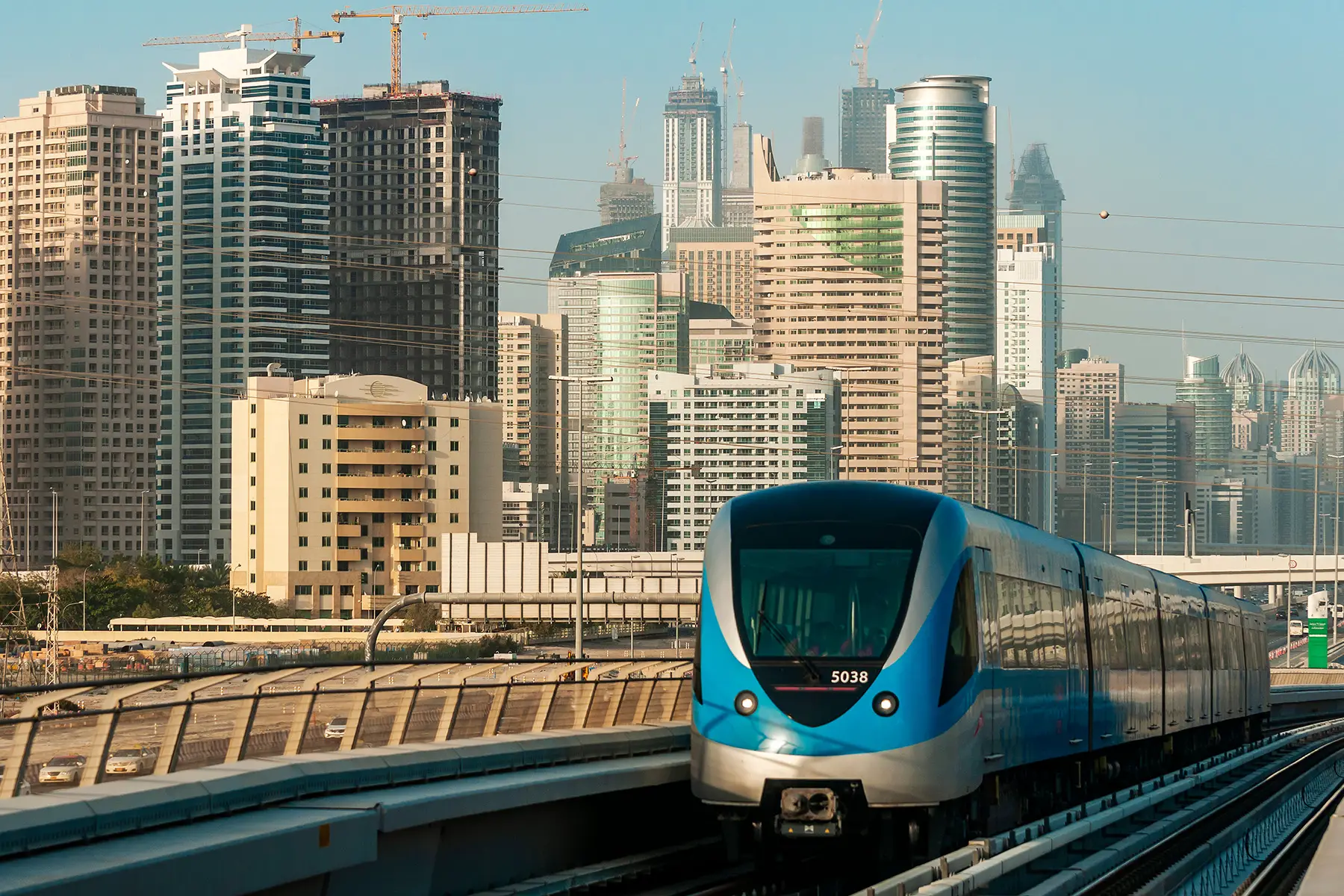
So, for now, Dubai Metro is the closest you will come to a train service. Despite this, the metro is a technological marvel and is the world’s fourth-largest automated metro in the world, after Singapore, Shanghai, and Kuala Lumpur. The metro network spans nearly 90 kilometers and 49 stations and has two lines: red and green. A third line is currently under construction.
Dubai Metro timetables
The Red Line passes through 29 stations in Dubai, while the Green line passes through 20 stations. Both lines run seven days a week between the following times:
- Monday to Thursday: 05:00 to 24:00
- Friday: 05:00 to 01:00
- Saturday: 05:00 to 24:00
- Sunday: 08:00 to 24:00
The last train will arrive at the last stop at midnight (besides Fridays), so if you want to know the exact timing of the last train at the station of your choice, consult the RTA app.
Depending on the time of the day – peak or off-peak – trains come at an interval of between four to seven minutes.
Fares for metro service in Dubai
You need a Nol card to access metro services. You can purchase these at all stations over the counter, or via ticket vending machines. There are four kinds of Nol cards: gold (first-class), silver (regular), blue (discounted), and red (limited use). The blue card is for users with discounted fares: students, senior citizens (over 60), and people with special needs. You have to produce proof (explained below in the disability-friendly section), and you need to be a resident of the UAE. The red card is ideal for tourists.
Fares start at AED 3 and go up to AED 40, depending on what kind of card you hold and the distance you travel.
Useful facts
- If you hold a silver card and mistakenly enter the gold class coach, you can face a fine of AED 100 on the spot.
- Dubai Metro services both Terminal 1 and 3 (the Emirates terminal) of the Dubai airport. Each passenger can only bring one piece of luggage.
- No pets on board.
- Do not eat, drink, or chew gum in the metro, as you will face a fine.
- Men cannot enter the ladies’ compartment, even when they are with family members.
Buses in the UAE
Buses in the UAE are safe, efficient, and clean, and drivers are trained in the skills of driving articulated vehicles. They are all equipped with air-conditioners, including the bus stations. In the bigger emirates of Dubai and Abu Dhabi, you will even find a number of ecological buses that run on rechargeable batteries. For traveling from emirate to emirate, buses are the cheapest and most popular form of public transport.
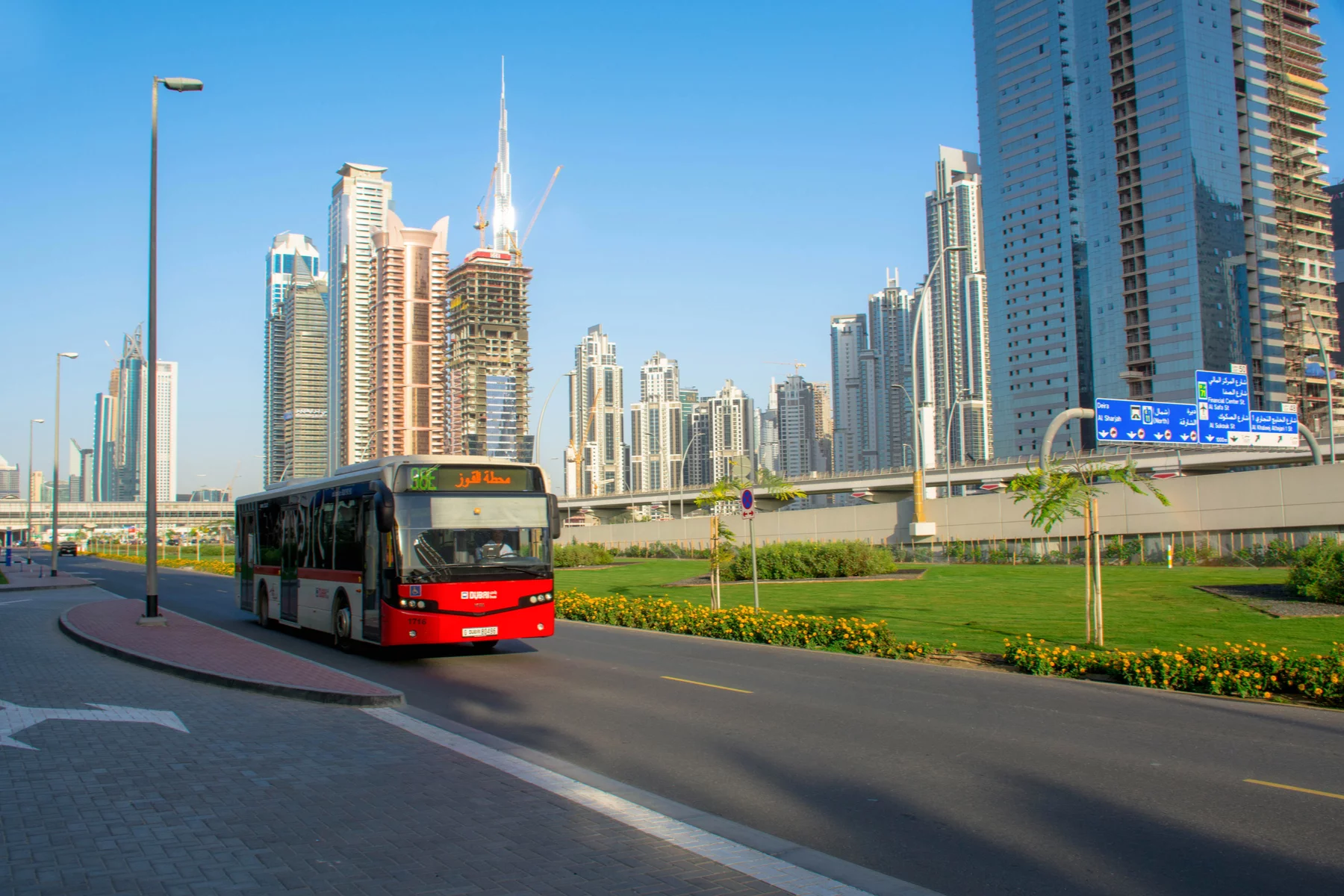
In Dubai, Abu Dhabi, Sharjah, and Ajman, payments have to made through the transport card: Nol card in Dubai, Hafilat smart card in Abu Dhabi, the Sayer card in Sharjah and the Masaar Card in Ajman.
To facilitate travel, buses in the UAE are equipped with the following:
- disability-friendly features
- audio-visual aids
- CCTV monitoring
- ease of payments
- segregated sections for women and families
Bus transportation in the other emirates
In the emirates of Fujairah and Umm Al Quwain, public buses are rare and not very organized. But if you are coming in from Dubai or Abu Dhabi, the buses will drop you at convenient spots. Hotels run coaches or you can hire taxis or some form of private transport to get around. In RAK, public buses are available at the RAK Public Taxi and Bus Station. However, you can only use public buses for inter-emirate travel. Within the emirate, you will have to take a taxi or a private vehicle to get around.
In the rest of the UAE, you can board a bus at a central bus station if you are traveling from emirate to emirate. These come with with restrooms, prayer rooms (for Muslims), and cafes/eateries.
Fares
Fare charges on buses usually start at AED 2 for local travel and go up to about AED 8. For inter-emirate travel, they are around AED 25. If you are taking a ride on a bus to reach the metro station, your bus travel is free once you punch in your Nol card at the metro.
Senior citizens (over 60) and students get discounts, however, they will need an ID. In Dubai, for instance, they need to purchase the Nol blue card (they have to submit documents), which becomes automatic proof.
Timetables and routes
All public bus details are available online. In Dubai and Abu Dhabi, they are also available on the RTA and Darb apps respectively. Bus services start around 04:00 in the morning and are operational until 01:00, however, consult a timetable for more specific cues.
Long-distance coaches in the UAE
The UAE is a tiny country with easy navigation, so the longest stretch to get from one emirate to the other – say Abu Dhabi to Fujairah, more than 250 kilometers – takes a maximum of five hours.
All long-distance coaches are very comfortable, fully air-conditioned, and with reclining seats. A few stops allow passengers to grab a bite and use restroom facilities.
You can hop onto a long-distance coach at any of the central bus stations in each emirate (all information is available online, and on travel apps operated by any of the emirates). You can use your travel card. However, ensure you have enough balance because many of these stations may not have top-up services. Otherwise, you can buy your ticket via cash/card from the appropriate ticket machines.
All stations have decent facilities, such as convenience stores, food outlets, and washrooms. Fares for travel start at AED 20.
In some places when travelling by bus, it is forbidden to eat or drink, so tank up at the pit stops. If there is any emergency – say, you are not feeling well, speak with the bus staff before boarding and seek their advice. They may make an exception for you.
Taxis in the UAE
Taxis are still the most preferred public transport option in the UAE. The public taxis are efficient and clean, and fares depend on the duration of your ride. You can hail a taxi on the street so long as the taxi sign is lit, which means the cab is accepting passengers You can also book a taxi via the helpline, and, in Dubai, through the RTA app.
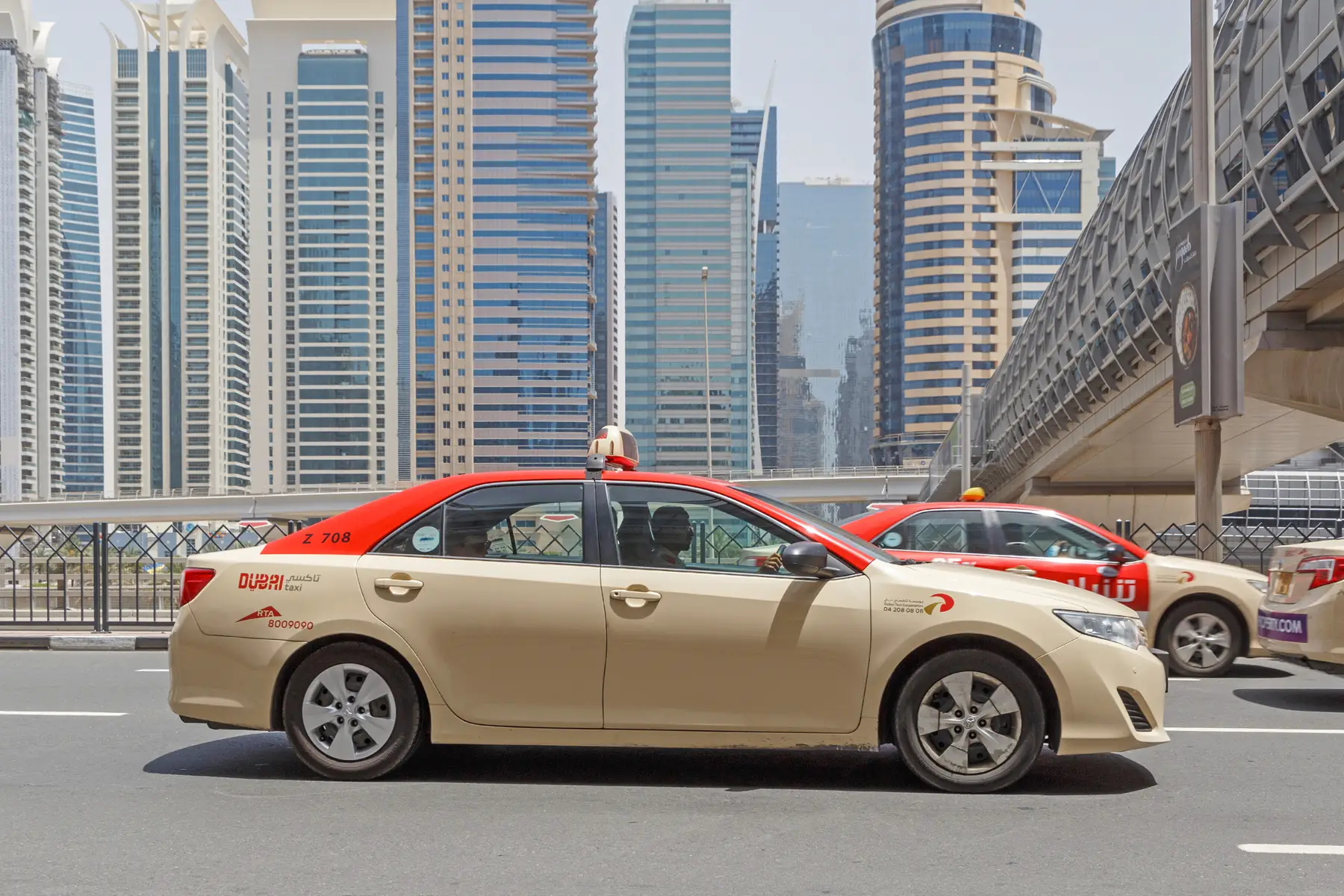
While Dubai, Abu Dhabi, and Sharjah have their own departments of transport that run the taxi services, the smaller emirates have public taxis managed and operated by Emirates Transport. Taxi fares vary from emirate to emirate, with Dubai commanding the highest price tags.
Most taxis are saloons or sedans; Toyota, Hyundai, and Nissan are the popular car brands for taxis. In certain cases, well-heeded residents will avoid common taxi brands, such as the Camry or the Altima, because of their association with big taxis.
Useful info about taxis in the UAE
- Drivers usually understand and speak English and Arabic. Many also speak Hindi.
- Many of the taxis accept card payments, however cash is still the most common form of payment.
- A tip is welcome, but even if you don’t tip, it’s not a problem.
- In the larger emirates of Dubai, Abu Dhabi, and Sharjah, taxis operate 24 hours a day. Night charges (23:00 until 06:00) are slightly higher than during the day.
- It’s possible to request taxis for women, driven by female chauffeurs.
- Airport taxis – the ones that operate out of arrival areas – have higher starting rates.
Car-sharing services and Uber in the UAE
Uber and Careem are the two major app-based taxi services in the UAE. Uber operates in Dubai and Abu Dhabi, while Careem operates also in Sharjah and Ajman. Unlike the public taxis, fares can go slightly haywire during peak hours and on certain days of the year, such as New Year’s Eve or during Eid. But on regular days and off-peak hours, the fare structure of public taxis and Uber/Careem is almost the same.
Uber and Careems use mostly Lexus, and the cars are luxurious to the hilt. In addition, you can expect all drivers to be fluent in English.
If you are looking for a taxi, you may come across dodgy drivers offering you a lift in exchange for money. Be aware however, as this is illegal, and you will probably get a fine if the police find out.
Other methods of public transportation in the UAE
The RTA in Dubai has a slew of alternative transport forms, including the following:
- Water taxis run from 10:00 to 19:00, and span 44 stations along the waterway; each taxi seats up to 10 passengers;
- Dubai Ferry operates ferry services, starting at 11:00, ending at approximately 19:00 every day. Its services run within the emirate and also links it to Sharjah;
- Dubai Tram runs between Dubai Marina and the Palm Jumeirah/Al Sufouh, along a 14.5 kilometer stretch and 11 stations, all days of the week. The trams come at 10 minute intervals during peak hours and 12 minute intervals during off-peak hours. Two of the metro stations – DAMAC and JLT – overlap with tram stations. Fares start at AED3;
- Abras – traditional Arabic boats made of wood, powered by a motor – provide transport across the Dubai Creek. These charge as little as AED 1 for going from one end of the shore to the other. The Bur Dubai station opens from 05:00 to 24:00, while the Deira one operates 24 hours a day;
- Bicycles are available for rent through private companies. Most of the Dubai Metro stations have bicycle parking facilities for those who cycle to and from the station.
Disability access for public transportation
The UAE government has been very proactive to look into the needs of disabled residents, who are referred to as people of determination. There is a special ID card for people of determination, provided for by the Ministry of Community Development. This offers them a host of facilities, including free and/or subsidized travel. You can contact your emirate’s transport authority to apply for this card and obtain more information.
In Abu Dhabi, for instance, people of determination are eligible for free unlimited travel on all buses within the city. In Dubai, the metro comes with disability-friendly amenities, such as:
- Tactile floor paths in all stations for the visually-impaired
- CCTV for the hearing-impaired
- Each carriage has a designated space for a wheelchair, located close to the door, and allotted seating
Dubai Taxi Corporation, which operates taxis 24 hours, has a fleet of vehicles for disabled people that are fitted with special features. These include a wheelchair and are driven by trained drivers.
For more information, visit the UAE government website for people with special needs.
Safety tips for public transportation in the UAE
The UAE is one of the safest countries in the world. That blanket extends to its public transport network as well. CCTV operates in all public transport, and even in some of the taxis.
Despite this fact, it is always good to follow certain guidelines, as follows:
- If you a woman traveling alone in a taxi at night, it’s best not to indulge in banter with the driver.
- If you are a woman traveling alone, or with kids, use the ladies and children coaches on the metro and public buses
- Always ensure your transport card has sufficient balance to avoid paying a fine
- Do not eat or drink when you are commuting by public transport. It’s also a good idea to not carry cooked food as fellow passengers may get offended by the smell.
- Do not carry alcohol. If you are riding a taxi after shopping at Duty-Free, keep the bottles in the trunk with the rest of your luggage.
- If you are traveling by taxi, insist on the printed receipt at the end of the trip as this has the taxi’s license number. In case you have left anything behind in the car, you can call up their lost and found.
Making a complaint about public transportation in the UAE
You can file complaints online or via a customer care helpline. For instance, if you have a complaint about a Dubai bus or taxi service, you can seek to address it with RTA. If you have a complaint in Abu Dhabi, you can get in touch with the Department of Transport. For smaller emirates like Fujairah or Ras Al Khaimah, chances are public transport will come under the jurisprudence of Emirates Transport.
Depending on the nature of your complaint, it takes between two and seven days to resolve your complaint. They will usually ask a number of questions and then tell you when you can expect a redressal, or an explanation as to why your complaint didn’t achieve any outcome.
If you are not satisfied with the outcome, you can follow up with the Consumer Protection Department.
Useful resources
For more information, visit the following official websites and web pages:
